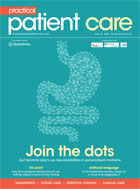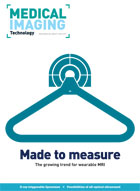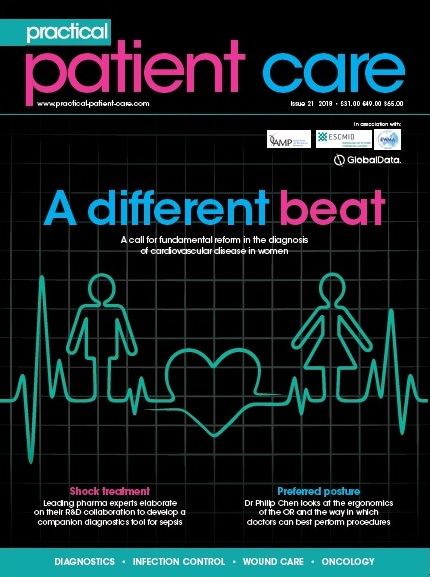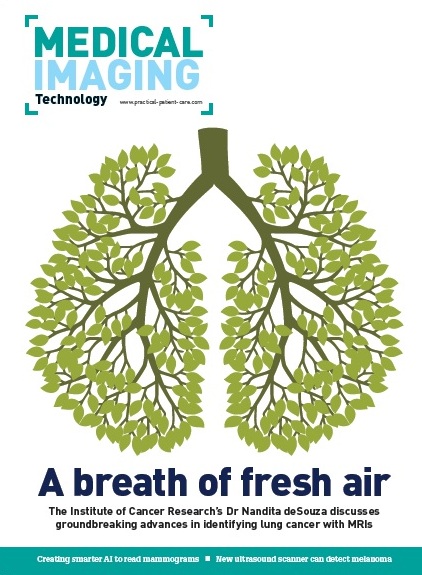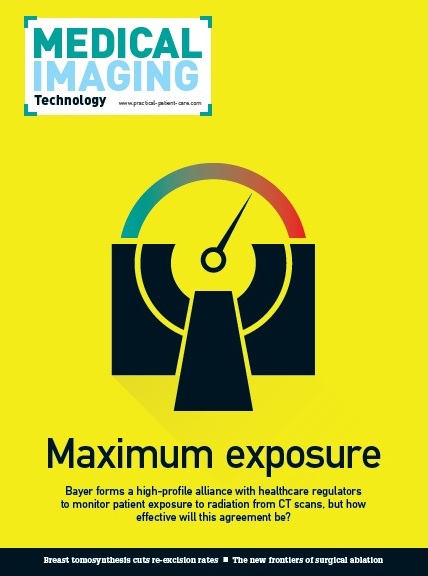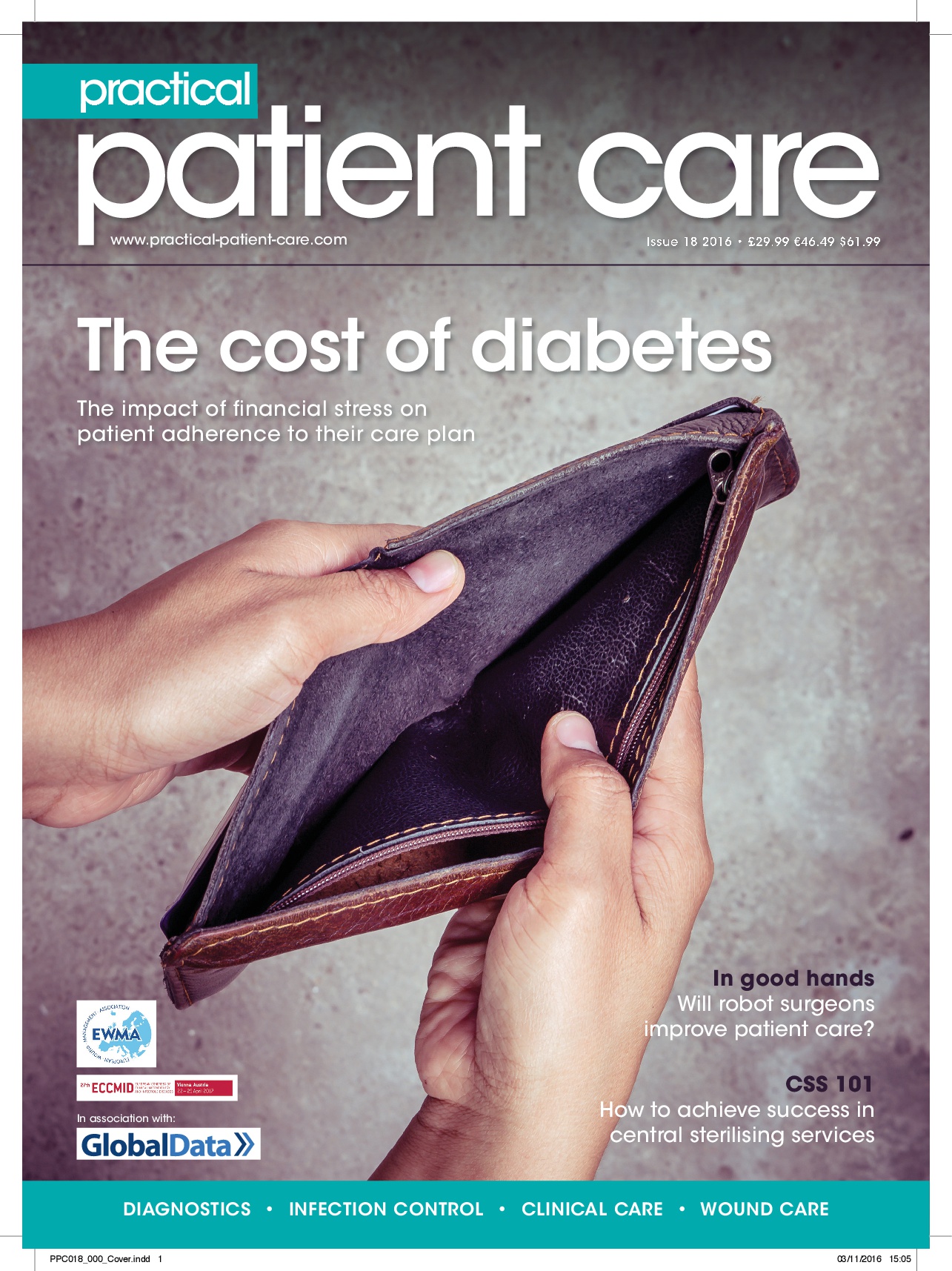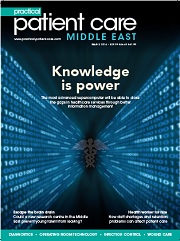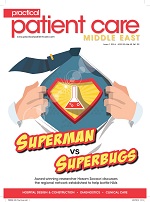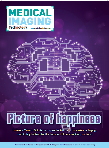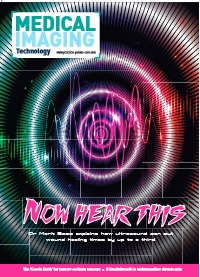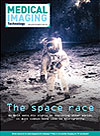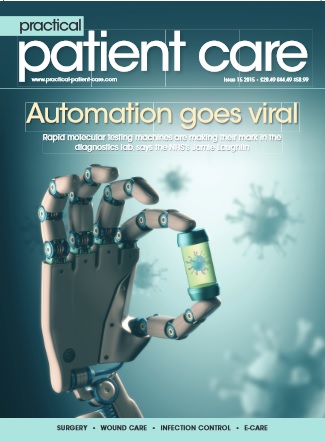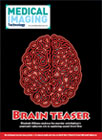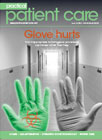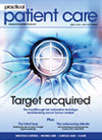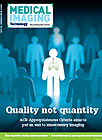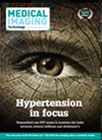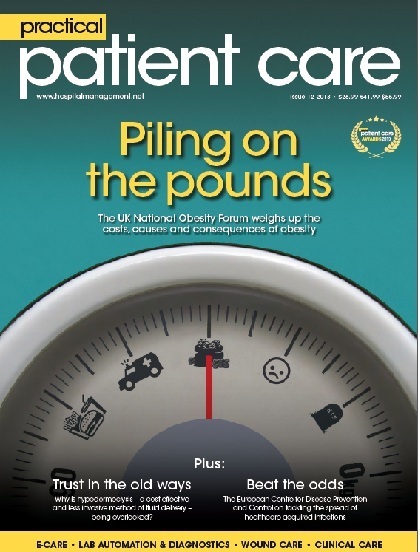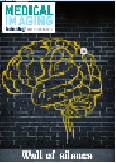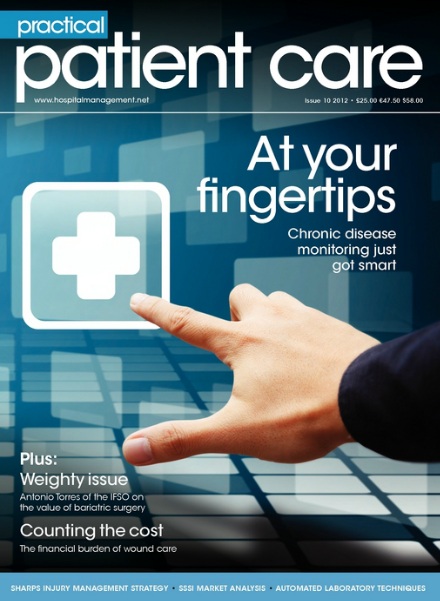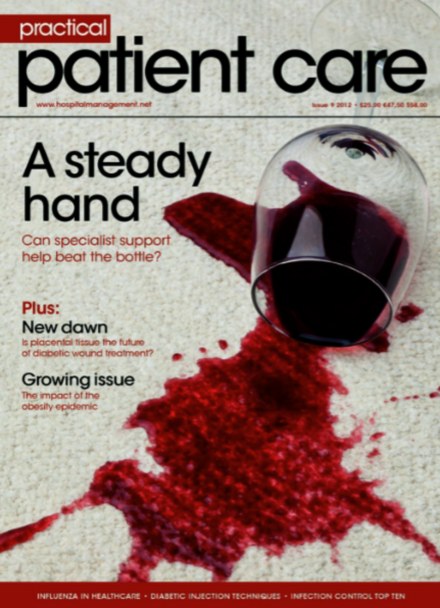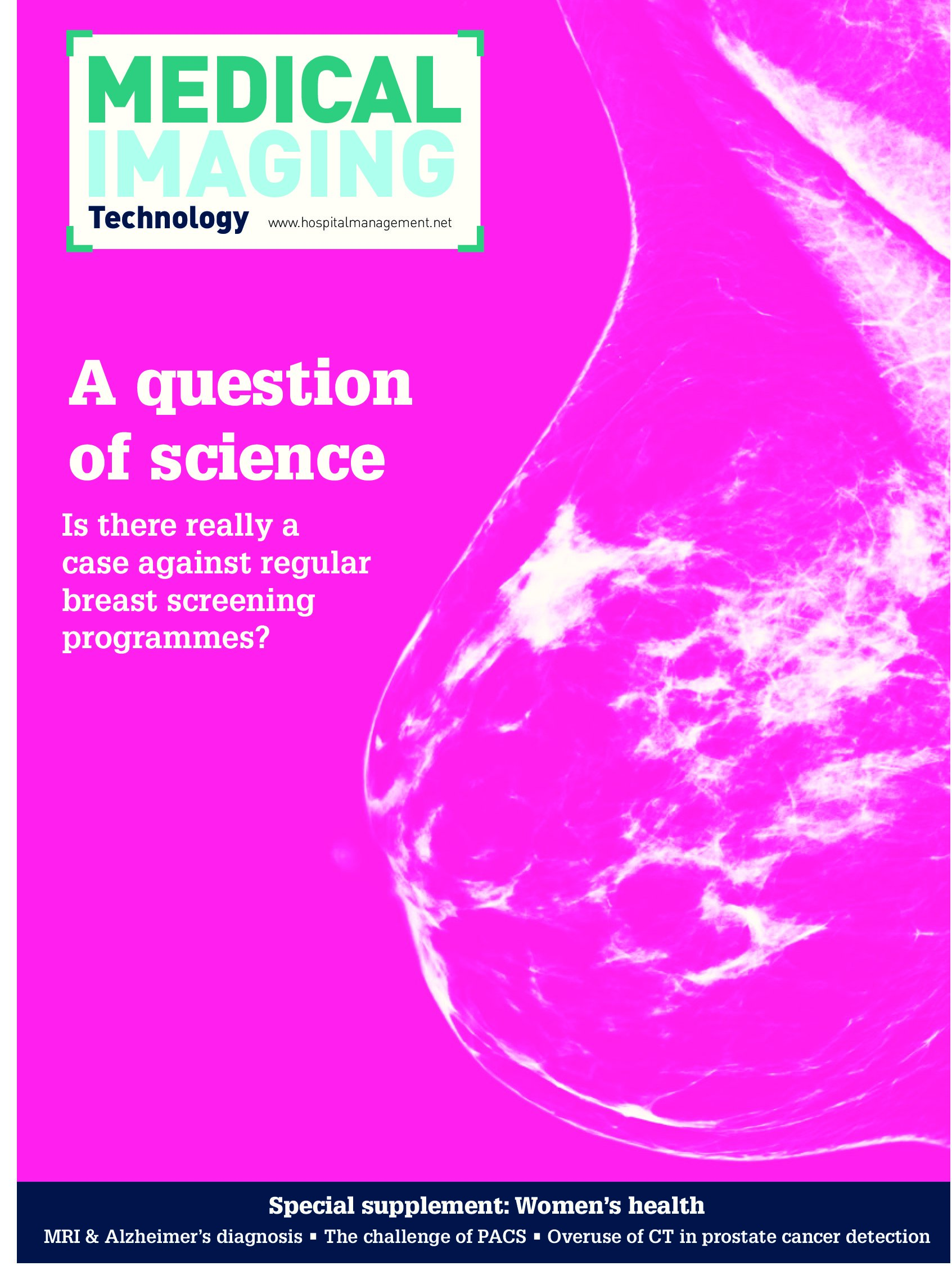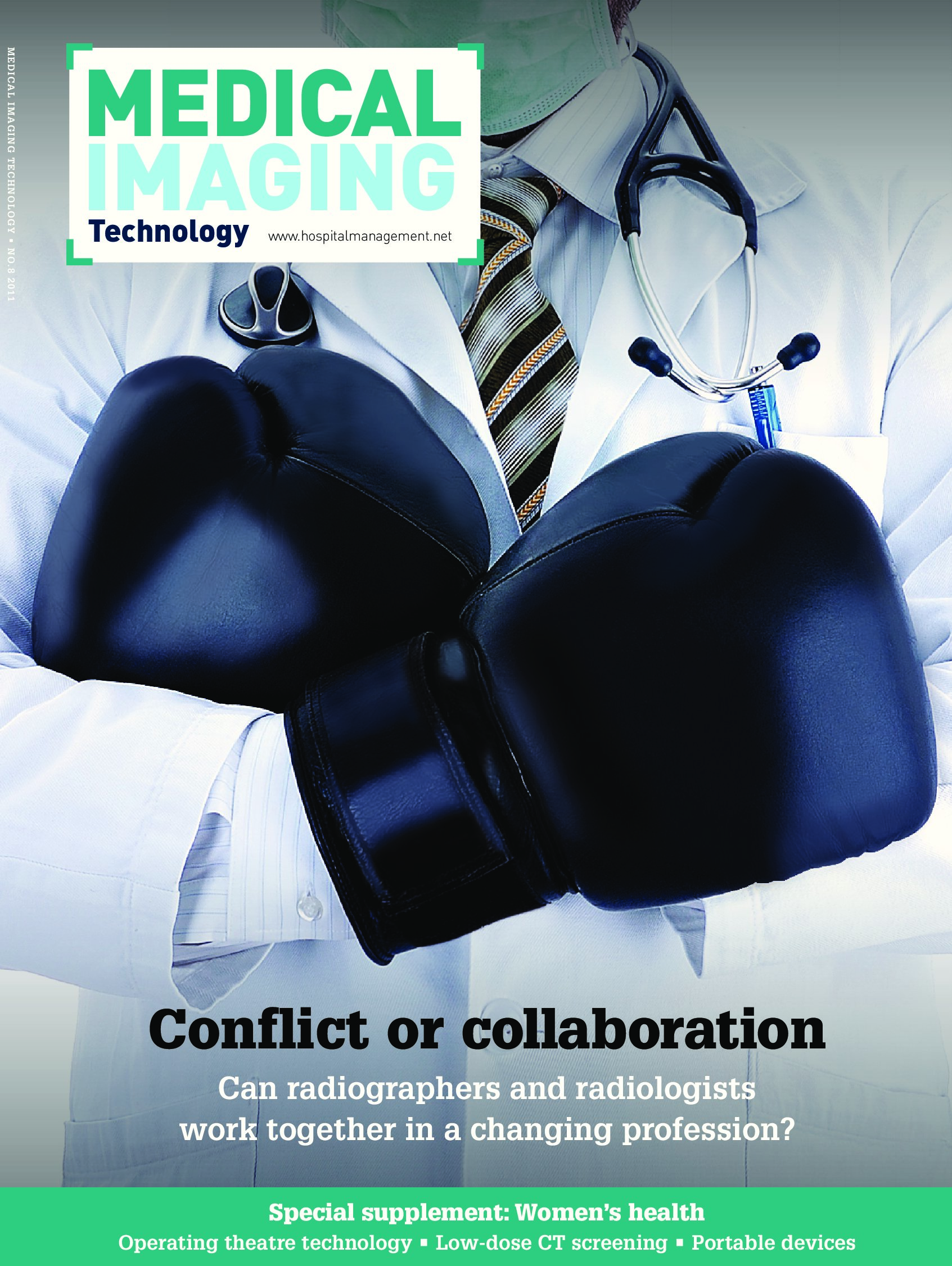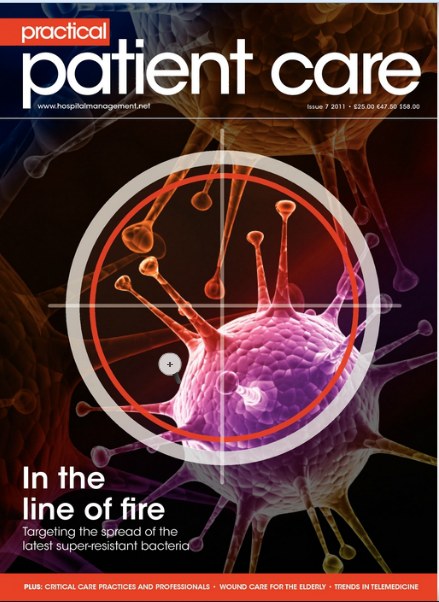The Publication
Practical Patient Care Issue 32 2023
In this edition, our features include:
New strategies for overcoming biofilms on wounds to deliver antibiotics.
Advances in monitoring could be key to tackling the rate of heart disease.
How surgeons could one day operate from 3,000km away from their patients.
Soft materials that enable brain monitoring for neurological disease diagnosis.
Expert opinion on infection control in hospitals throughout the pandemic.
Practical Patient Care Issue 31 2023
In this edition, our features include:
How proteins could tell us key information about disease processes.
Harvard Wyss founder Don Ingber tells us about his sepsis treatment device.
A new pathway to improve the care of diabetic foot ulcers.
Research into finding a blood-borne biomarker for Alzheimer's disease.
The evolution of trauma surgery with urgent care expert Stephen Bush.
Practical Patient Care Issue 30 2022
In this edition, our features include:
Using bacteriophages to diagnose diseases caused by bacteria.
The latest research on treating septic shock, and why more might be less.
Promising methods for assessing a negative margin in cancer surgery.
Monkeypox, its risk profile and how outbreaks can be controlled.
The problem of toxicity in immunotherapy and how it might be overcome.
Practical Patient Care Issue 29 2022
In this edition, our features include:
Using artificial intelligence to diagnose patients more accurately.
How advanced imaging techniques could make brain surgery safer.
What's in the pipeline for treating patients with heart failure?
The changes in infection control made to reduce the spread of Covid-19.
The potential benefits of smart wound care devices in the clinic.
Practical Patient Care Issue 28 2021
In this edition, our features include:
The use of antimicrobial susceptibility testing to stop the increasing prevalence of antibiotic resistant diseases.
How physicians cared for chronic wounds remotely during the pandemic.
The benefits and costs of surgical ORs going hybrid.
Overcoming the limitations of PCR testing with new methods.
How pulse oximeters have a racial bias that can be deadly.
Practical Patient Care Issue 27 2021
In this edition, our features include:
How liquid biopsies can speed up diagnosis and improve cancer treatment.
Covid-19 and the ongoing threat of antimicrobial resistance.
The feeling on the critical care wards that have borne the brunt of the pandemic.
Strategies for identifying and dealing with wound biofilms.
What does AI mean for the future of surgery?
Practical Patient Care Issue 26 2020
On the cover of this issue: Like they do every winter, health services across the Northern Hemisphere are gearing up for flu season – though this year, of course, they have to cope with rather more. With cases of Covid-19 peaking and re-peaking across Europe and North America, doctors' risk being hit with a double emergency. Yet look to more southern climes, and the situation doesn't seem quite so hopeless. Andrea Valentino talks to experts on both sides of the equator to learn about how Southern Hemisphere nations have fared with the two-pronged challenge, and what lessons, from vaccines to diagnostics, their northern neighbours could learn.
It comes down to testing, but this is not a test. We can't blame a lack of preparation and promise to cope better next time anymore. Every learning opportunity needs to be seized upon to develop the best response, both for right now and for the months and years to come. Irenie Forshaw talks to Steven Woloshin, co-director of the Center for Medicine and Media at The Dartmouth Institute, and Bruce Tromberg, director of the National Institute of Biomedical Imaging and Bioengineering, about the most promising testing strategies for mitigating further damage and rebuilding the societies and health systems we recognised before 2020.
On a more personal scale, Will Moffitt consider the impact of post-intensive care syndrome and ventilation trauma on Covid survivors, and asks experts how critical care teams can protect patients from mental as well as physical damage. Plus: telemedicine specialists in the US and UK discuss how healthcare can best adapt to the remote world while maintaining its connection with patients.
Practical Patient Care Issue 25 2020
In the wake of COVID-19, handwashing has become a popular topic of conversation like never before. However, despite being an integral aspect of infection control, it has traditionally proven challenging to encourage adherence among healthcare professionals, let alone lay people. Epidemiologist Brandon Brown discusses optimising hand hygiene practices and the respective adequacies of alcohol-based sanitisers and the traditional soap-and-water method.
Ventilators are also making headlines, but a recent study has found broad variation in the way non-invasive ventilation is being delivered within US hospitals. Laura Myers of Massachusetts General Hospital and Chris Garlin, a respiratory consultant at Gartnavel General Hospital, discuss the findings and implications of this report in the current climate.
Also in this issue: We reveal how an innovative wound care solution was inspired by a simple spider's web; look at how a new blood test could transform eye melanoma diagnosis; assess AI's potential role in training surgeons of the future; and investigate current widespread failings in lab analysis of exome sequencing.
Practical Patient Care Issue 24 2019
There is a lot of hype around machine learning, AI and automation within healthcare, but implementation is at an early stage. Nevertheless, these tools provide huge opportunities to a number of different areas. Nikolay Oskolkov, research scientist from Lund University, speaks to Emma Green about the potential of deep learning to transform diagnostics.
Paper-based diagnostics at point-of-care are commonplace in today's healthcare. However, they do have their limitations, something scientists are working to address. Andrew Tunnicliffe speaks with Professor Eden Morales-Narváez of the Center for Optics Research, Mexico, to find out how a variant of quantum physics could help.
Also in this issue: The struggle to diagnose rapidly is a significant cause of death from communicable and non-communicable diseases in the developing world. BIVDA chief executive Doris-Ann Williams discusses the potential of point-of-care testing to address this issue. Plus: Scientists have created a new mobile skin-bioprinting system, which allows bilayered skin to be printed directly onto a wound. Sean Murphy, assistant professor at Wake Forest Baptist Medical Centre, speaks to Kerry Taylor-Smith about the implications for wound care.
Practical Patient Care Issue 23 2019
Hot on the heels of the success of the NHS's 100,000 Genomes Project, the NHS Genomic Medicine Service is due to be launched later this year. Professor Clare Turnbull, researcher and consultant at the Royal Marsden Hospital, speaks to Emma Green about how this technology can enhance diagnostic strategies.
Researchers from Eindhoven University of Technology in the Netherlands and Japan's Keio University have developed a glowin-the-dark paper strip for quick detection of infectious diseases. Maarten Merkx, a researcher from Eindhoven University of Technology, talks to Abi Millar about the potential of this technology to provide cost-effective and efficient diagnosis.
Also in this issue, Understanding the beliefs of healthcare professionals regarding glove use and associated hand hygiene is imperative in order to improve practices. Louise Thomas explores the research on these perceptions and behaviours. Plus: TB remains a public health issue in developing nations, partly due to the lack of adequate diagnostic testing facilities. Is molecular detection the answer? Kim Thomas speaks to health economist Hassan Haghparast-Bidgoli about the benefits and challenges.
Practical Patient Care Issue 22 2018
New research has found that one in four non-antibiotic drugs affect the growth of bacteria in the gut, which could promote antibiotic resistance and greatly impact the way in which healthcare professionals diagnose and treat disease. Lucy Evans speaks to Nassos Typas of the European Molecular Biology Laboratory about the capacity to harm as well as heal.
Plus, the potential for artificial intelligence (AI) and machine learning to transform the healthcare field is huge, with studies already finding diagnostic platforms outperforming their future human colleagues in terms of speed and accuracy. Take-up has been slow, however, with relatively few examples of active AI tools on medicine's front lines. What is accounting for this delay, and to what extent are we currently witnessing a cultural shift? Patrick Kingsland investigates.
Also in this issue: Dr Maria Daniela Angione of Trinity College Dublin has developed an electronic chip intended for use as part of a disposable diagnostic tool. Now undergoing preclinical trials, it could quickly detect bacterial infections and help address the growing problem of antimicrobial resistance. She discusses its potential impact with Abi Milar. And, non-adherence to treatment regimens costs healthcare systems hundreds of billions of dollars every year. Elly Earls speaks to Jon Lee-Davey, internet of things (IoT) health lead at Vodafone, to discuss how an IoT-powered solution could potentially save money and lives.
Medical Imaging Technology Issue 22 2018
Developments in areas such as 3D printing and sensor technology are ushering in a new era of MRI design, with two current projects highlighting the growing potential for wearable MRI devices. Paul Miller hears from research teams at NYU School of Medicine, the University of Nottingham, and University College London who are leading the charge.
In a significant development for the use of X-rays in cancer treatment, a group of Australian scientists have engineered 'X-ray-triggerable liposomes'. These tiny bubbles, filled with chemotherapy drugs, are injected into the body and release their payload when activated by an X-ray. Tim Gunn takes a look at this procedure, which combines two cancer treatments with immense precision and has the potential to be more effective at lower doses than either could be on its own.
Also, 100 sites across the US are participating in a clinical trial to determine the best method of mammography. The Tomosynthesis Mammographic Imaging Screening Trial (TMIST) will compare 2D and 3D mammograms in a bid to determine whether the latter should be the industry standard. And: nanoscientists at Rice University have demonstrated a method for loading iron inside nanoparticles to create MRI contrast agents that outperform gadolinium chelates, the mainstay contrast agent that is facing increased scrutiny due to potential safety concerns. James Sanderson hears from the team.
Practical Patient Care Issue 21 2018
As we grow older, our chances of developing heart disease gradually increase. However, misdiagnosis of the condition among women, relative to men, remains at worryingly high levels. Greg Noone talks to Professor Maja-Lisa Løchen about steps to bring female heart disease into focus.
Two leading names in pharma have signed an R&D agreement to develop a companion diagnostic test for septic shock. Kerry Taylor-Smith speaks to Jean-Jacques Palombo of Roche Diagnostics and Margarita Salcedo-Magguilli of Inotrem, about the challenges of beating sepsis.
Also in this issue: Foot ulcers are a major problem for diabetic patients and amputation rates are rising across the UK. Dr Richard Paisey, diabetes footcare lead for the south-west region of England, explains how his team was able to buck the trend. Plus, Practical Patient Care assesses the potential for new digital immunoassays and molecular point-of-care tests.
Medical Imaging Technology Issue 21 2018
A new MRI technique might provide a reliable way to assess how lung cancers are responding to treatment. Kerry Taylor-Smith speaks to Nandita deSouza about the technology.
A revolutionary neonatal MRI system is enabling hospitals to run more brain diagnostics on premature babies in intensive care. Elly Earls talks to Uri Rapoport, CEO of Aspect Imaging.
Also in this issue: A team of scientists has developed the world's first cancer scanner that detects blood vessels grown by a malignant melanoma with an infrared laser beam. UK project leader Jon Holmes discusses. Plus, how new 'deep learning' software promises to transform ultrasound.
Practical Patient Care Issue 20 2017
US health systems are building small, full-service hospitals to target gaps in the market – but they also provide patients with a low-stress hospital experience. Eleanor Wilson discusses the business case for micro-hospitals, and what they can do for patient care, with Dr James Nichols.
Prostate cancer is one of the world's most common cancers, but treatment is hamstrung by imprecise testing. Andrea Valentino talks to Dr Sabine Mai, Dr Kevin Little and Ann Jeffers-Brown about how doctors and scientists are improving prostate cancer tests and fighting the stigma around the disease.
Also in this issue: Andrew Putwain looks into how acoustic emission-monitoring system could improve the lives of patients and improve other areas of medicine. Plus, cancer patients are now benefitting from super-microsurgery that can help to prevent lymphoedema. Sophie Peacock speaks to Dr Wei Chen from the University of Iowa Hospitals and Clinics division of plastic and reconstructive surgery.
Medical Imaging Technology Issue 20 2017
A radiation dose management repository is under way in the US. Abi Millar speaks to Dr Mary Reich Cooper, senior vice-president of clinical services at the CHA, and Dennis Durmis, head of commercial operations for radiology Americas at Bayer, about this project.
Proving the effectiveness of treatments for cystic fibrosis has traditionally been limited to basic lung function tests; however, a new MRI technique that was trialled at the University of Missouri has shown that new drugs may offer hope to patients. Ross Davies speaks to Dr Talissa Altes, chair of the study, about her findings.
Also in this issue: MRI ultrasound fusion biopsies are a breakthrough in imaging technology. Dr Gopal Gupta, associate professor at Loyola Medicine, Chicago, speaks about what this technology means for prostate cancer. Plus, Professor Wladyslaw Gedroyc, a consultant radiologist at Imperial College Healthcare NHS Trust, tells Greg Noone how focused ultrasound therapy can provide effective, non-invasive relief for essential tremor patients.
Medical Imaging Technology Vol. 18 2016
Virtual reality could soon let us see inside a growing foetus. Using Oculus Rift headsets, a Brazilian team has developed new technology to create a 3D model from ultrasound and MRI, helping to spot birth defects to then communicate to parents. Lead researcher Dr Heron Werner from the Clínica de Diagnóstico por Imagem in Rio de Janeiro explains its benefit to Eleanor Wilson..
Gamma cameras are traditionally large devices that are situated in nuclear medicine departments, but technology from the world of astrophysics has enabled the production of compact gamma cameras that allow nuclear imaging at the patient bedside and in the operating theatre, as Professor John Lees of the University of Leicester explains.
Also in this issue: Dr Daniel Stäb, chief developer at the University of Queensland Centre for Advanced Imaging speaks to Medical Imaging Technology, discusses a new brain-imaging technique and Professor Alessandro Olivo of UCL speaks to Bradford Keen about bringing the X-ray capabilities of a synchrotron to clinical settings.
Practical Patient Care Issue 19 2017
A smartphone attachment that can identify bacteria's resistance levels without the need for trained lab technicians looks to be a key weapon in the fight against antibiotic-resistant microbes. Bradford Keen speaks to Dr Aydogan Ozcan at the University of California, Los Angeles, about how this device will be a vital tool for resource-deprived areas.
US researchers have developed a more precise method for estimating average blood-sugar levels that can cut diagnostic errors by more than 50%. John Higgins of Harvard Medical School explains how this method could lead towards a more convenient and correct form of patient diagnostics.
Also in this issue: Greg Noone talks to Dr John Clarkson, CEO of Atlas Genetics, about a new diagnostics platform that could revolutionise point-of-care treatment for STIs and Professor Zena Moore speaks to Kerry Taylor-Smith about the benefits of new handheld biometric scanners that use sensors to detect the onset of pressure ulcers before they manifest on the skin.
Practical Patient Care Issue 18 2016
People with diabetes can face financial stress, and often have to sacrifice healthcare and food, regardless of their country's healthcare system, according to data from sources across the globe. Dr Minal Patel discusses how innovative policies can help to alleviate patients' suffering.
As the first robot to complete soft-tissue surgery is hailed as the future of medicine, Kim Thomas speaks to Dr Peter Kim from the Children's National Health System in Washington, DC, who was involved with the research to develop the technology, about what this will mean for operating rooms and patient safety.
Also in this issue: Trevor Garcia, MIDSc, director of education at the UK Institute of Decontamination Sciences, speaks to Kerry Taylor-Smith about how to ensure proper storage in an operating theatre that will enable a smooth flow of surgical instruments. Plus, Dr Methodius G Tuuli of Washington University talks about his research into infection in caesarean-section patients and how a simple change of antiseptic could represent a breakthrough.
Practical Patient Care Middle East Issue 2 2016
The SESAME Project is constructing the Middle East's first major international research centre. Sir Christopher Llewellyn Smith, president of the SESAME council, explains what the project is all about.
Marfan syndrome is a cardiovascular disease that affects a disproportionately high number of people in the Middle East. Early in 2016, surgeons presented a new technique to treat patients in the early stage of the disease.
Also in this issue: For those living with diabetes, fasting during Ramadan can be potentially dangerous. Dr Sarah Ali talks about how practitioners can keep their patients safe. Plus, Dr Paul Lecoq talks about CERN's Endo TOFPET-US project, which has developed an endoscopic PET scanner that could be used to find biomarkers of early-stage pancreatic cancer.
Practical Patient Care Middle East Issue 1 2016
The GCC faces a worrying growth in superbugs, one of which is resistant to all known antibiotics. In this edition of Practical Patient Care Middle East, Elly Earls meets researcher Hosam Zowawi to find out why collaborative action is the only way to effectively face the threat.
Diabetes triples the risk of co-morbid tuberculosis, complicates its treatment and increases the likelihood of poor outcomes for both diseases. Dr Scott Heysell, who spearheaded a report on the problem of the diseases' correlation, about where the research to beat them needs to focus, and the issues it could lead to in terms of treatment and prevention.
Also in this issue: James Quentin examines how hospitals and governments can reach out to men effectively in order to encourage regular examination for prostate cancer and try to catch the disease early; Sophie Peacock asks whether the growth of luxury hospitals in the Middle East will benefit medical tourism; and Kerry Taylor-Smith speaks to Dr Vijay Magon of CCube Solutions and Intisar Abdullah of King Abdulaziz Medical City in the UAE about the future of patient records.
Practical Patient Care Issue 17 2016
Although viruses like Zika and Ebola have demonstrated the importance of good diagnostic technology, the field remains undervalued and underfunded. Practical Patient Care asks Rosanna Peeling, professor and chair of diagnostics research at the London School of Hygiene and Tropical Medicine, what the implications are for developing-world countries where the disease burden is highest, and whether technology transfer could be the solution.
Technological developments are constantly affecting the global pharmaceuticals market and manipulating trends in point-of-care testing. We investigate what this means for treating patients and how such progress can bring about positive change.
Also in this issue: How can the industry enforce a culture of making sure nurses and doctors always wash their hands? We speak to Dr Jocelyn Srigley to find out how the industry is training itself to remember. Plus, ECCMID programme director Winfried Kern outlines the highlights of the 26th ECCMID, and Practical Patient Care speaks to Severin Läuchli of European Wound Management Association.
Medical Imaging Technology Vol. 18 2016
Routine mammograms for breast cancer may also be an effective tool for catching heart disease early. Dr Laurie Margolies, chief of breast imaging at the Dubin Breast Center, explains the technique's potential new role in female cardiovascular care.
With state-funded sonography in crisis, many in the UK believe that ultrasound would be better handled by independent contractors. Medical Imaging Technology weighs up the pros and cons of US-style outsourcing for providers and patients.
Also in this issue: The Endo TOFPET-US project has developed an endoscopic PET scanner that could be used to find biomarkers of early-stage pancreatic cancer. Abi Millar speaks to Dr Paul Lecoq, a physicist at CERN, about what this technology entails. Plus, a series of regulatory measures have been launched to cope with the increasingly intense scrutiny to which medical imaging services are being subjected, as Nick Dudley of the British Medical Ultrasound Service, explains.
Medical Imaging Technology Vol. 17 2016
What exactly is it that makes us happy? Scientists at Kyoto University might have found an answer, using imaging technology to scan the brains of participants and understand how different people experience happiness. Oliver Hotham speaks to Dr Wataru Sato about the groundbreaking research, his influences, and its implications for the treatment of neurological and mental health problems.
New research into the practical applications of non-invasive ultrasound could save millions, allowing radiologists to detect carotid stenosis and pre-empt unnecessary surgery with medication. Fisnik Jashari, neurology resident at the University Clinical Center of Kosovo, talks about how medical imaging could be helping to transform the treatment of stroke sufferers, and promote cures that are safer, more economical and less invasive.
Also in this issue: Sarah Williams speaks to Dr Tim Witney and Dr Michelle James about a new method of highlighting tumour tissue using PET to identify changes in cell metabolism, and what it could mean for brain cancer patients. Plus, Greg Noone talks to Dr David Skaggs about the capabilities of the new scanner installed in the Children's Hospital of Los Angeles and how it promises to transform the scanning regime for scoliosis sufferers.
Practical Patient Care UK Issue 7 2015
Rare diseases are surprisingly common – about 30 million EU citizens are currently living with them. As each condition typically only affects a handful of people, reaching a conclusive diagnosis can be akin to finding a needle in a haystack. Sarah Williams discusses the various challenges and opportunities of genetic sequencing for diagnosing these rare conditions with Lucy Jenkins, interim director of the regional genetics laboratories and consultant clinical scientist at the North East Thames Regional Genetics Service at Great Ormond Street Hospital.
The five-year-forward view envisions a new relationship with patients, carers and communities. It outlines the steps and changes needed to ensure that the NHS supports people to gain greater control over their own care, develops new models of care to help prevent some long-term conditions (LTCs) and improves the quality of life for people who acquire or develop these types of conditions.
Also in this issue: Nic Paton speaks to Beverley Bryant, NHS England director of strategic systems and technology, about the progress made in digital innovation in the NHS and the University of Sheffield's Dr Mark Bass discusses how blasting chronic wounds with ultrasound could reduce healing times by a third compared with current treatments.
Practical Patient Care Compendium 2016
Practical Patient Care Middle East Volume 1 2015
In this, the inaugural edition of Practical Patient Care Middle East, we take a look at the progress being made in the clinical uses of fMRI and how long it will be until such technology becomes commonplace in Middle Eastern hospitals.
Also in this issue: we explore the impact that aesthetics can have on recovery with Mounes Kalaawi, CEO of Clemenceau Medical Centre, Lebanon; and Dr Wael Al Mahmeed, chief of cardiology at Shaikh Khalifa Medical City, discusses the increased prevalence of heart failure in the Middle East and why prevention, not cure, is the way forward.
Plus, Dr Rola Shaheen, project leader for a study on breast cancer awareness in the Middle East, outlines the challenges of breast cancer prevention and the need for effective national screening programmes.
Practical Patient Care Issue 16 2015
Point-of-care tests for rapid detection of respiratory tract infections are emerging on the market. Practical Patient Care explore how these products compare with those of bacterial culture for detecting streptococcus infections with Pentti Huovinen, dean of medicine at the University of Turku, Finland.
Prisons and other places of detention pose particular risks for the transmission of infection for several reasons. We consider the most important factors for controlling and preventing infectious diseases in such settings with Sunita Sturup-Toft, Health and Justice public health specialist at Public Health England.
Also in this issue: Sophie Peacock speaks to Dr Sanjai Addla about the crucial impact robotics have had on keyhole surgery, and Sarah Williams discusses genetic sequencing for diagnosing rare conditions with Lucy Jenkins, interim director of the Regional Genetics Laboratories and consultant clinical scientist at the North East Thames Regional Genetics Service at Great Ormond Street Hospital.
Medical Imaging Technology Issue 16 2015
Blasting chronic wounds with ultrasound could reduce healing times by a third compared with current treatments, but how soon will it be before the technology reaches the clinic and what are the implications for pregnancy scans? In this edition of Medical Imaging Technology Elly Earls finds out from the University of Sheffield's Dr Mark Bass.
Schizophrenia is a serious mental disorder that causes hallucinations, delusions and disordered thought. Brain-scanning methods have revealed differences in healthy controls from people with the condition, but they are not yet accurate enough to inform diagnosis. Professor Joseph Kambeitz from Ludwig-Maximillians University introduces us to new algorithmic methods that could help change this.
Also in this issue: Sophie Peacock speaks to Dr Marina Alvarez Benito about how early-stage detection of breast cancer could be revolutionised by making 3D digital mammography the standard of care, and Medical Imaging Technology explores the safety issues related to CT and X-rays during pregnancy with Dr Manjiri Dighe, associate professor of radiology at the University of Washington.
Practical Patient Care UK Issue 6 2015
Operations to remove brain tumours or detach the structures that trigger epilepsy are some of the most sensitive a neurosurgeon can perform, and the associated risks mean many procedures are ruled out. Andrew McEvoy, consultant neurosurgeon at the National Hospital for Neurology and Neurosurgery, tells Sarah Williams how 3D imaging equipment allows surgeons to navigate through the brain with greater precision and safety, and why this technology is making such a difference.
Healthcare-acquired infections are a critical public health threat, but tools to identify the genetic makeup of perpetrating microorganisms might soon prove their worth in controlling outbreaks. Beryl Oppenheim, consultant microbiologist at Queen Elizabeth Hospital in Birmingham, talks to Natalie Healey about her team's pioneering use of whole-genome sequencing to stop multidrug-resistant pathogens.
Also in this issue: Ross Davies reports on the surgical site infections debate that continues to divide the medical community; Dr Catherine Owens, paediatric radiologist at Great Ormond Street Hospital, London, talks about optimising radiation dose for young patients; and Abi Millar talks to architectural theorist Charles Jencks, co-founder of the charity Maggie's Centre with his late wife Maggie; CEO Laura Lee; and architect Lord Norman Foster.
Medical Imaging Technology Issue 15
Space travel takes its toll on the bones of astronauts. As NASA plans for longer and riskier missions to other worlds, it is vital this phenomenon is better understood so that relevant countermeasures can be devised. Dr Jean Sibonga and Dr Eugene Boland outline the issues with bone loss in microgravity, where one giant leap could easily lead to two broken legs.
While imaging technology has helped researchers to map the brain and understand many of its processes, memory has largely remained a mystery. Professor Emrah Duzel of the University Hospital Magdeburg reveals how his team has used high-resolution MRI scans to unlock the secrets of an important human memory circuit and assist our understanding of neurodegenerative diseases.
Also in this issue: osteoporosis is one of the greatest challenges facing modern healthcare. Dr Thomas Link, professor of musculoskeletal imaging at the University of California, San Francisco, discusses the ongoing evolution of diagnostic imaging in the field and the latest research into new biomarkers. Plus, Professor Guy Rutty and Professor Bruno Morgan from the University of Leicester's Forensic Pathology Unit take us through the latest thinking in the field of post-mortem cross-sectional imaging.
Practical Patient Care Issue 15 2015
We've seen major changes in the way biomedical scientists test for sexually transmitted infections, but how do they work, and which techniques most benefit the patient? Jamie Laughlin, microbiology manager for South West London Pathology services, shares his insight on developments in the diagnostics lab.
Clostridium difficile is the most common bacterial infection acquired in UK hospitals, but the country has made inroads to tackling it. Professor Mark Wilcox, Public Health England's lead on the pathogen, discusses trends in C difficile reduction and how to identify future threats.
Also in this issue: Abi Millar talks to Mark Thursz, professor of hepatology at Imperial College London about improving hepatitis diagnosis, and Dr Gareth Thompson, chief medical officer at Our Mobile Health, speaks to Greg Noone about how digital healthcare apps could transform the diagnosis and treatment of certain conditions.
Medical Imaging Technology Issue 14
Despite weighing less than 2% of your total mass, your brain consumes more than a fifth of your body's energy, drawing its fuel from 400 miles of blood vessels. Historically, however, neuroscientists haven't given much thought to the colossal network of neural veins and arteries. As Jack Wittels reveals, Elizabeth Hillman and her team from Columbia Engineering may have discovered the missing link in our understanding of how the brain dynamically tunes its blood flow to stay in sync with the neuron activity.
As patients have become heavier, radiologists have faced greater challenges interpreting their diagnostic scans. In this edition of Medical Imaging Technology, Abi Millar discovers what the rising number of obese patients means for radiology departments, and how each variant of imaging practice faces its own specific issues where the condition is concerned.
Also in this issue: The consensus is that contrast agents are causally associated with the development of acute kidney injury, particularly among patients who already have renal problems. Many published guidelines advice withholding contrast in these at-risk individuals, often at the expense of diagnostic accuracy. Extensive research conducted at Mayo Clinic suggests these fears may be unfounded; Robert McDonald brings us up to speed with the latest data.
Practical Patient Care Issue 14 2014
Type 2 diabetes has increased parallel to global obesity since the 1960s; three million people in the UK are afflicted by the disorder and that number's expected to rise to 4.6 million within the next 15 years. In this edition of Practical Patient Care, Chris Godfrey looks at proposals for bariatric surgery to be offered to type 2 diabetics and Professor Nicholas Finer runs us through evidence to support the efficacy of using gastric bands to cure the disease.
Non-communicable diseases like diabetes, and others such as stroke and heart disease, are a major cause of premature death in low and middle-income countries. Dr Fred Hersch discusses how the humble mobile phone could help shift the burden and make healthcare more accessible in these parts of the world.
Also in this issue: From patients watching their own operations to surgeons performing procedures from remote locations, we look at the hospitals of the future. Plus, Jennie Wilson of the University of West London reveals the multiple ways that clinical gloves can be misused - from using them in situations where they are not required to failing to observe the necessary hand-hygiene steps while they are being worn.
Practical Patient Care Issue 13 2014
Diagnostics is one of the most rapidly evolving areas in medicine. Driven by a demand for speedier solutions, the market is growing fast and the tests themselves are becoming more sophisticated. In our cover story, we explore an approach that could change the face of cancer diagnosis, facilitating a next-generation, fully automated approach to histology. Researcher Dr Kirill A Veselkov runs through the benefits.
Of course, newer is not always better; when it comes to wound care, certain practitioners are adopting a back-to-basics approach. Nicola Ivins from Cardiff University's Wound Healing Research Unit and Worchester Royal Hospital's Judy Belcher discuss the potential for honey-based dressings. An equally sticky subject is NHS outsourcing - as hospitals contract out their facilities management, what does this mean for cleanliness? Jane Lethbridge, director of the Public Services International Research Unit, delves into the controversy.
Elsewhere, medical epidemiologist Alex Kallen discusses endoscopy cleaning, and specialist nurse Anita Rush talks bariatric mobility solutions. We explore the potential for antibacterial sutures, discuss advanced patient monitoring systems and report from the Advantech World Partner Conference in China.
Medical Imaging Technology Issue 13
Overutilisation has long been a concern for the medical imaging community and estimates suggest that as many as 30-50% of scans may be medically unnecessary. In this issue of Medical Imaging Technology, the ACR's Cindy Moran explains how the situation could be set to change.
Despite multiple efforts to develop a screening programme for ovarian cancer, no previous trials have been able to demonstrate a net benefit. But, as ultrasound methods are refined, it seems there may be hope yet. As the largest trial to date heads towards its conclusion, Natalie Healey asks principal investigator Ian Jacobs what we can expect.
Also in this issue, more good news for cancer research in the shape of a data analysis system that will allow researchers to apply mass spectrometry imaging (MSI) to tissue samples. Heralded as altering the fundamental paradigm of histology, this development could shake up methodologies that have barely changed in a century. Jack Wittels talks to Dr Kirill A Veselkov, one of the researchers, about its potential to revolutionise cancer identification and treatment, and asks what hurdles remain in the way.
Medical Imaging Technology Issue 12
Dr Timothy Hughes, the subject of our cover story, and his team recently broke new ground in Alzheimer's research, using PiB-PET scans to show that amyloid plaque build-up in the brain (a cause of dementia) is related to arterial stiffness. It seems that high blood pressure in middle age may influence the development of Alzheimer's in later life, and Hughes' research takes us a step closer towards understanding the underlying mechanism.
Dr Mitchell Machtay discusses how FDG-PET scans can determine prognosis in patients with advanced lung cancer, we take a peek into the contentious field of contrast media and Dr Keith Dreyer, chair of the American College of Radiology's IT and Informatics Committee, discusses the proliferation of PACS in the medical imaging sector.
Practical Patient Care Issue 12 2013
By examining the causes, treatments and probable consequences of obesity in the UK, Debbie Cook and Professor David Haslam of the National Obesity Forum take a look beyond the scaremongering and ask what needs to be done to beat a nation's bulge. How do we deal with psychological issues (such as those induced by stigmatisation) as well as tackling the outward signs and causes?
Another topic of ongoing concern is healthcare-associated infections (HAIs). While these have existed for as long as there have been hospitals, a recent study by the European Centre for Disease Prevention and Control (ECDC) has suggested they are now more prevalent than ever. We quiz ECDC director Dr Marc Sprenger about the findings, and what he feels should be done.
Of course, HAIs are not just an issue for Europe. Dr Ruth M Carrico of the University of Louisville School of Medicine in the US discusses the prevalence of C. difficile and how we can make our healthcare environments a safer place to be.
Finally, as innovations continue apace, it is tempting to assume that the newest and slickest modes of treatment are the best. We challenge this assumption in a report on hypodermoclysis - an age-old method of subcutaneous fluid delivery that has recently fallen out of favour in many quarters. We spoke to palliative care nurse Cathy Mouchebeuf about why this little-acknowledged technique may be overdue for a comeback.
Practical Patient Care Issue 11 2013
Healthcare-associated infections are on the increase and antibiotics are no longer effective. In this edition of Practical Patient Care, Derek Butler, chair of MRSA Action UK, calls on the medical industry to return to basics and look to the successes of other industries in controlling bacteria.
We also take a look at the forecast for HIV until 2022 with GlobalData analysts Alyssa Klein and Alison Carpenter. Members of the Association of Perioperative Registered Nurses discuss needlestick injuries in the operating room, and Ivan Fistonic of the Ob/Gyn & Menopause Center talks about the early diagnosis of urinary incontinence.
Medical Imaging Technology Issue 11
The boundaries of what is possible with medical imaging have consistently been pushed further and further through the curiosity, hard work and flashes of genius from those working in the field. Our cover story in this issue of Medical Imaging Technology focuses on another entry to this long list, Professor Adrian Owen’s ground-breaking research into communication with patients in a vegetative state using fMRI.
We also look at what the future holds for breast cancer screening, discuss the importance and selection of monitors for use in medical imaging, and weigh up the advantages and disadvantages of teleradiology.
Practical Patient Care Issue 10 2012
In this issue of Practical Patient Care, Diane Strong, Emmanuel Agu, Peder Pedersen and Bengisu Tulu of Worcester Polytechnic Institute's Healthcare Delivery Institute discuss their vision for smartphone-based chronic disease monitoring.
Elsewhere in this edition, we hear from GlobalData analysts regarding the burgeoning marker for therapeutics in skin and skin structure infections. We also speak to IFSO president Antonio Torres about why bariatric surgery remains a vital option for weight-loss problems.
Medical Imaging Technology Issue 10
Traditionally, the diagnosis of psychiatric disorders has relied on well established pen-and-paper or cognitive testing. However, advances in imaging technology have engendered a whole realm of new possibilities when it comes to the early detection of disorders, the determination of at-risk individuals and thus the opportunity for early intervention.In our cover story, Professor Mary Phillips discusses her work in using fMRI to identify the children of parents with a mental disorder who may themselves develop a disorder latterly.
Also in this issue Dr Jean Weigert gives an insight into the use of breast specific gamma imaging in conjunction with mammography and ultrasound screening techniques, we count down the top ten diagnostic devices in medical imaging, and explain why the heat will soon be on for tumours with the development of a non-invasive chemotherapy technique.
Practical Patient Care Issue 9 2012
With alcohol-related admissions to hospitals in England topping the one-million mark for the first time, the solutions some hospitals are putting in place to tackle the problem are timely, as Sir Ian Gilmore, Royal Liverpool Hospital, and Eric Appleby, Alcohol Concern, tell our readers.
Members of the Forum for Injection Technique introduce guidelines to help improve dose administration and Dawn Managhan of the UK's Information Commissioner's Office discusses data safety breaches. We also discover the top ten disinfectants used to control healthcare-associated infection rates, as highlighted by GlobalData.
Medical Imaging Technology Issue 9
Oncological screening is an ever-growing area of medical imaging, with the march towards increased fidelity, reliability, efficacy and accuracy never ceasing. Professor Daniel Kopans, along with Drs Robin Wilson and Per Skaane, evaluate the established programmes of breast cancer screening and discuss the possibilities for improvement via cross-disciplinary training.
Also in this edition of Medical Imaging Technology we discuss the increasing use of MRI in stroke diagnosis, Alberta Health Services’ plans to significantly increase PET and CT scan usage, and Mary Barber shares her experiences of implementing the NHS’ picture archiving and communication systems (PACS).
Practical Patient Care Issue 8 2011
Medical technology is developing at breakneck speed, but innovation alone is not enough to tackle today's global health challenges. Professor Guang-Zhong Yang and Lord Ara Darzi of the Institute of Global Health Innovation explain why scientists and policy-makers need to establish common aims if the issues facing developed and developing countries are to be addressed.
We find out how investing in pioneering teleheath technology has paid off for one UK hospital district, and discover what psychological impact the diagnosis of healthcare-acquired infections (HAIs) can have on patients. We also hear from Dr Caroline E Fife as she guides us through the key principles of modern wound dressing selection.
Medical Imaging Technology Issue 8
The technological progress made in the field of medical imaging, even within the last decade, is remarkable. Devices are getting smaller, becoming increasingly sensitive and being put to use in novel and innovative ways. However, it is not always a case of ’out with the old, in with the new’ in medical screening: Drs Anthony DeMaria and Bruce Kimura discuss the progress of portable ultrasound devices and explain why they believe the stethoscope won’t be made redundant.
In our cover story, as some practitioners are taught to read images, we delve into the evolving role of the radiographer,considering the benefits of the expansion of the role and consider the possible ’clash of responsibilities’ in the radiography room.
Practical Patient Care Issue 7 2011
A new type of antibiotic resistance originating in South Asia has the potential to cause havoc worldwide is the proper precautions are not taken by regulators and healthcare facilities. Dr David Livermore of the UK's Health Protection Agency tells Practical Patient Care how we can prevent its spread.
Elsewhere in this issue, we take a look at the many applications of e-care from remote consultations to medication adherence. We also investigate the strategies that are being employed to help maintain the dignity of patients, and find out how the industry can meet the need for integrated care and quality out-of-hours support.







